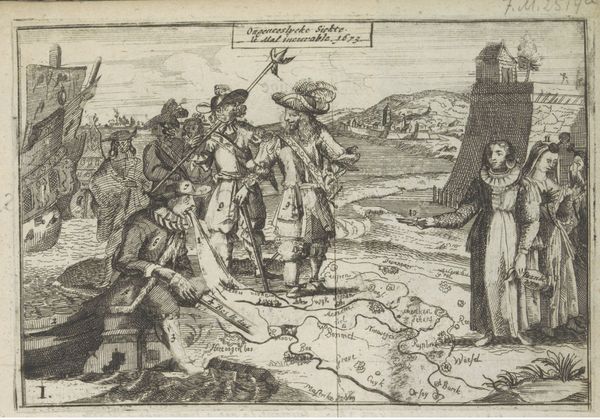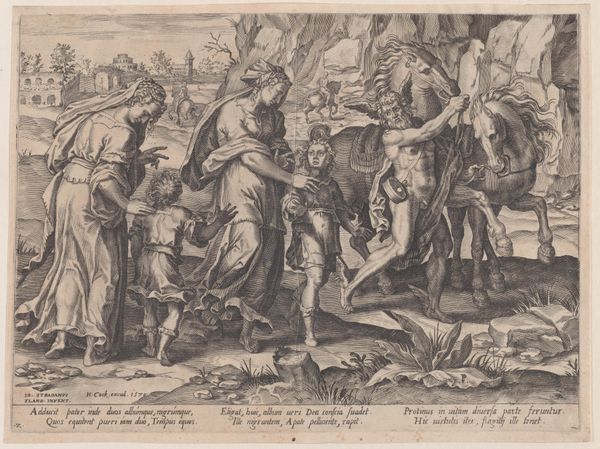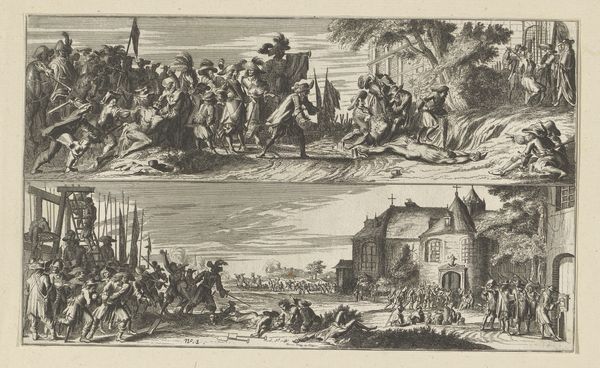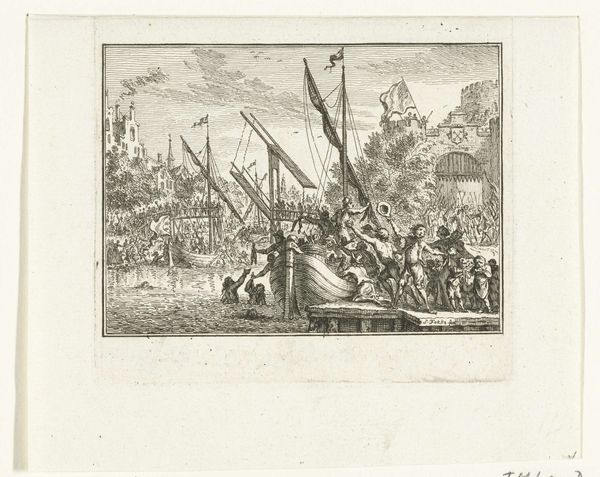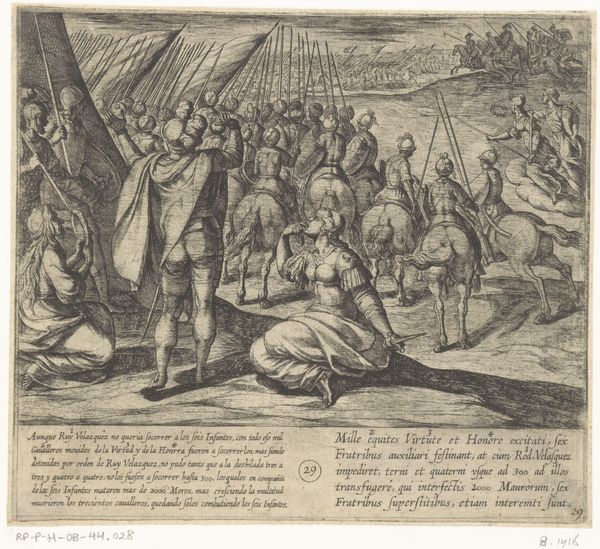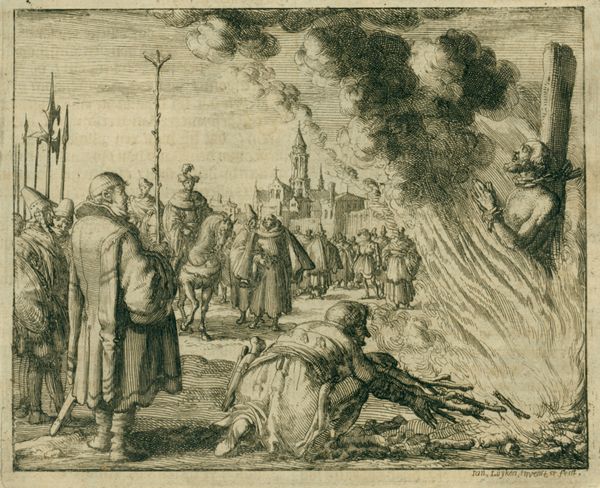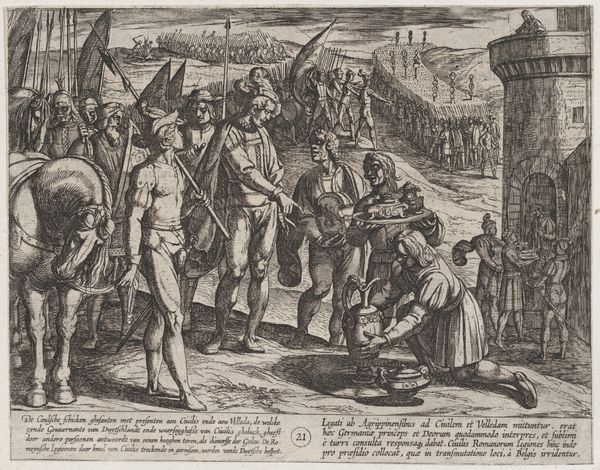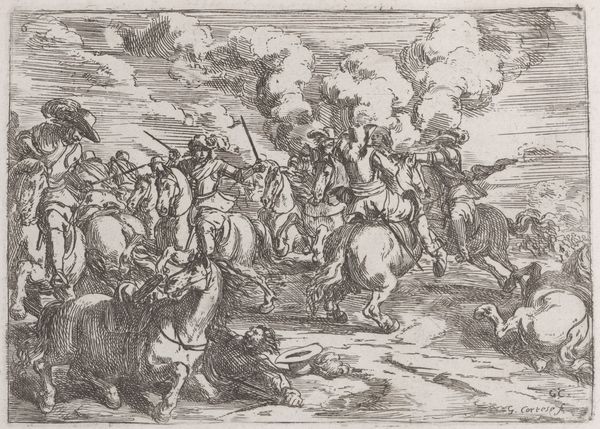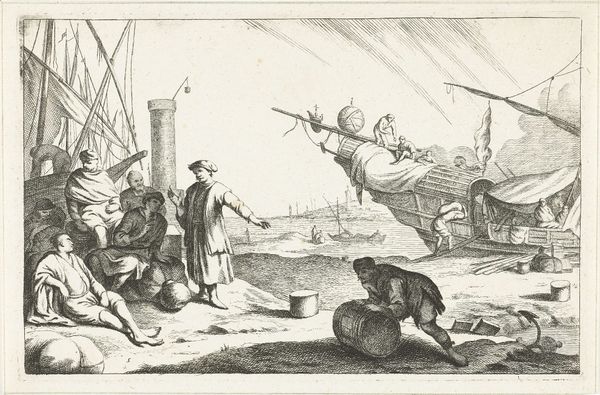
print, etching, ink, engraving
#
ink drawing
#
allegory
#
narrative-art
#
baroque
#
symbol
# print
#
etching
#
ink
#
cityscape
#
history-painting
#
engraving
Dimensions: height 186 mm, width 190 mm
Copyright: Rijks Museum: Open Domain
Curator: Let’s take a closer look at "Hollands antwoord op De Fransman en de Hollander," or "Holland’s Response to the Frenchman and the Dutchman," an etching made by Romeyn de Hooghe between 1673 and 1674. What's your immediate impression? Editor: It’s a chaotic, frenetic scene, isn't it? Very busy, filled with figures seemingly caught in some moment of intense activity, almost a propaganda piece. There’s a distinct sense of unease, like a powder keg about to explode. Curator: Precisely. This print captures the tense political climate of the Franco-Dutch War. It's more than just a scene, it's a visual argument playing on Dutch identity and resistance. De Hooghe skillfully used symbolism to convey his message. Editor: The central figures, those common folk, appear to be pushing back against… what exactly are they pushing against? It’s a barricade of sorts. I imagine there is quite a statement regarding the solidarity of everyday citizens embedded here. What could you tell me about that? Curator: Absolutely. Those figures represent the united Dutch provinces standing firm against French invasion, metaphorically depicted by the crumbling barrier, with an allegory of Dutch Liberty seated above the battle, ensuring Dutch safety from those on the right who have come to siege. Editor: And the pig among them? Isn’t that an explicit message? It makes me question how war functions within Dutch iconography, class dynamics, gender, and other social stratifications. Is it trying to critique class through this allegorical portrayal of the battle? Curator: The pig mocks King Louis’ men in disguise as clergymen. Indeed. Those are just some ways people may respond, yes. What's fascinating is how De Hooghe employs both historical references and popular imagery to stir up patriotic fervor. Editor: Looking closer, one can observe Dutch resistance. How everyday citizens banded together, regardless of social stratum to defend their freedom, or "koms." De Hooghe makes an assertion of strength within unity. He truly weaponized his artwork against any threats to the Dutch population. Curator: His command of etching allowed him to create incredible details, from facial expressions to architectural elements in the landscape behind the battle. This piece exemplifies how art becomes a powerful tool for shaping public opinion. Editor: Indeed, examining works like these helps us unpack not just history, but how national narratives were actively constructed and disseminated. De Hooghe masterfully combined symbolism and contemporary political anxieties. Curator: It also pushes us to investigate how such narratives affect various people and their identities across Dutch society. The study of Dutch art can show us the long path of deconstructing these structures and narratives.
Comments
No comments
Be the first to comment and join the conversation on the ultimate creative platform.

